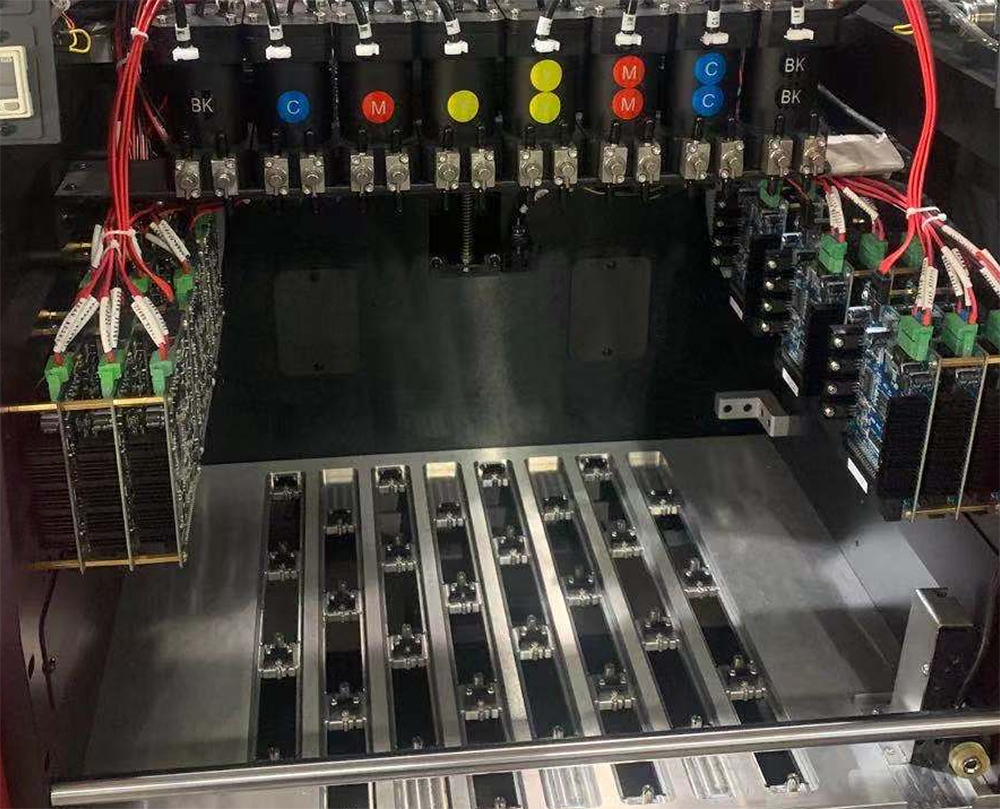Technical Aspects of Printing on Rubber With a UV Flatbed Printer
Technical Aspects of Printing on Rubber With a UV Flatbed Printer
Printing on rubber surfaces presents unique challenges due to the material’s inherent properties, such as its elasticity, texture, and chemical composition. However, advancements in UV flatbed printing technology have opened up new possibilities for achieving high-quality, durable prints on rubber. This article delves into the technical aspects of printing on rubber with a UV flatbed printer, exploring the printer’s capabilities, pre-press considerations, ink selection, printing process, and post-processing steps.

UV Flatbed Printer Capabilities
UV flatbed printers are designed to accommodate a wide range of substrates, including rigid and flexible materials. These printers use UV-curable inks that are instantly cured by UV light after being applied to the substrate. This curing process ensures that the ink adheres strongly to the material and is resistant to fading, scratching, and chemicals.
When it comes to printing on rubber, UV flatbed printers offer several advantages:
Versatility: UV flatbed printers can handle various types of rubber, including natural rubber, synthetic rubber, and silicone.
Precision: These printers can produce highly detailed prints with sharp edges and vibrant colors.
Durability: UV-curable inks create prints that are resistant to wear and tear, making them suitable for applications that require long-lasting graphics.
Flexibility: UV flatbed printers can print on both flat and slightly curved rubber surfaces.
Pre-Press Considerations
Before printing on rubber with a UV flatbed printer, several pre-press considerations must be addressed to ensure optimal print quality and ink adhesion:
Surface Preparation: Rubber surfaces should be clean, dry, and free of any contaminants that could affect ink adhesion. In some cases, pretreatment with a primer or adhesion promoter may be necessary.
Material Compatibility: Not all types of rubber are suitable for UV printing. It is essential to test the rubber material with the UV inks to ensure compatibility and achieve the desired print quality.
Design Adjustments: Designs should be adjusted to accommodate the rubber’s elasticity and texture. For example, avoiding overly intricate designs can help prevent ink cracking or peeling.
Color Management: Rubber’s unique surface properties can affect ink color and appearance. Conducting color tests is crucial to achieve accurate and consistent color reproduction.
Ink Selection
Choosing the right ink is critical for successful UV printing on rubber. UV-curable inks are specifically designed to cure under UV light, creating a durable and flexible print. Key considerations for ink selection include:
Ink Flexibility: The ink should be flexible enough to accommodate the rubber’s elasticity without cracking or peeling.
Chemical Resistance: The ink should be resistant to chemicals commonly found in rubber manufacturing and end-use environments.
Adhesion: The ink must adhere strongly to the rubber surface to ensure long-lasting prints.
Color Gamut: The ink set should offer a wide color gamut to accurately reproduce the desired design.
Printing Process
The printing process for UV flatbed printers involves several steps to ensure high-quality prints on rubber:
Printer Calibration: Calibrate the printer to ensure accurate color reproduction and ink deposition.
Material Loading: Load the rubber substrate onto the printer’s bed, ensuring it is securely positioned and flat.
Print Settings: Adjust the printer settings, including ink density, print speed, and UV lamp intensity, based on the rubber material and desired print quality.
Printing: Begin the printing process, allowing the UV lamp to cure the ink immediately after it is applied to the rubber surface.
Curing: Ensure that the ink is fully cured by passing the printed rubber under the UV lamp multiple times, if necessary.
Post-Processing Steps
After printing, several post-processing steps are essential to ensure the longevity and quality of the prints:
Inspection: Inspect the printed rubber for any defects, such as ink cracking, peeling, or color inconsistencies.
Cleaning: Clean the printed surface to remove any residual ink or debris.
Testing: Perform durability tests, such as scratch resistance and chemical resistance tests, to ensure the print meets the required specifications.
Packaging and Shipping: Package the printed rubber appropriately to protect the prints during shipping and handling.
Applications and Industries
UV flatbed printing on rubber offers numerous applications and is used in various industries, including:
Automotive: Printing custom graphics, logos, and branding on rubber components, such as tire sidewalls and interior trim pieces.
Manufacturing: Printing functional markings, such as part numbers and safety warnings, on rubber products.
Sports and Leisure: Printing logos, team names, and graphics on rubber sports equipment, such as grips for golf clubs and racket handles.
Promotional Products: Printing custom designs on rubber promotional items, such as wristbands and keychains.
Conclusion
Printing on rubber with a UV flatbed printer presents unique challenges, but advancements in UV printing technology have made it possible to achieve high-quality, durable prints. By addressing pre-press considerations, selecting the right ink, following a precise printing process, and implementing proper post-processing steps, it is possible to produce vibrant, long-lasting prints on rubber surfaces. With its versatility, precision, and durability, UV flatbed printing offers exciting opportunities for various applications and industries. As technology continues to evolve, the possibilities for UV printing on rubber will only continue to grow.
